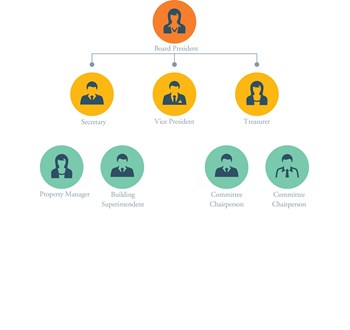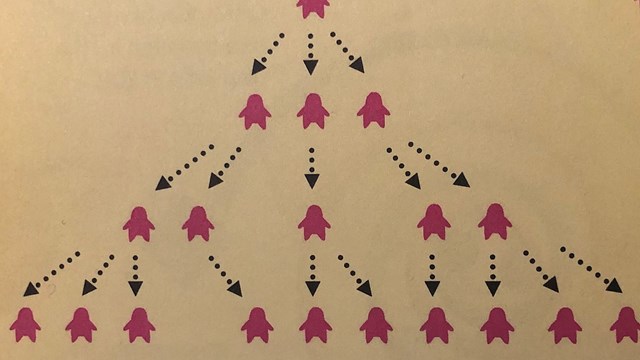
The beating heart of a community association or HOA is the board of directors. According to neighborhuddle.com, the role of that body is as follows:
“The association has responsibility for its common elements as well as the management and operation of the association’s business affairs—all in accordance with standards established by the governing documents created when the community was first developed...Members of the board of directors of an association serve without compensation unless the bylaws of the association provide to the contrary. The board’s authority includes all of the powers and duties enumerated in general law, as long as these powers are not inconsistent with the provisions of the documents governing the association.”
The website goes on to explain the unique mission of the board:
“The association acts through its officers and agents. The board of directors makes the policies for the association, but the officers and agents carry out these policies and administrative functions for the community. Some of the officers are clerical while others carry out substantive functions based on policies established by the board of directors. All of the officers have an affirmative obligation to act with utmost good faith towards the association and cannot deal in the funds or the property of the association to their own self advantage. Each association typically has a president, secretary, and treasurer and may have one or more vice presidents. However, an association may officially conduct its business with fewer officers than these, depending upon the laws of a given state.”
Board Structure
Barbara Holland is a regional manager with FirstService Residential of Nevada. She has been managing property since 1971. “Governing documents require a minimum of three directors to as many as seven – not necessarily based upon the size of the community, but rather on what the developer put in the covenants, conditions and restrictions (CC&Rs),” she says. “We have seen some associations over the years that had seven directors, and they have had to change their CC&Rs because they were having a problem finding seven people in the community who wanted to volunteer.
“In Nevada, the Secretary of State requires that a community association or HOA have a president and a secretary,” she continues. “Generally speaking, there is a president, and a secretary/treasurer; or a president, a secretary, a treasurer and a vice president. On a three-member board, there is generally a president, vice president, and a combined secretary/treasurer.”
Sheila Van Duyne, an attorney and owner of the Van Duyne Law Group in Reno, points out that “It’s best to encourage at least three fully participating board members at all times. It is difficult to work with less and still get much done. It should be remembered that this type of organization is not a regular, for-profit corporation. The board members cannot run their HOA like a regular company—a lot more consideration must be made because of the non-profit and homeowner association context.”
Board Positions
The role and duties of the various board positions are sometimes outlined in the CC&R, but more likely that information is found in the bylaws. The power and responsibilities of each office will be outlined and defined there as well.
“The president,” says Holland, “as in all such institutions, is the head honcho and sets the agenda. However, in Nevada, there are times where and when an individual homeowner in an HOA can send a letter to the board alleging a violation of the governing docs or the state statute. If the board doesn’t address the email or letter in between meetings, it can become an agenda item. Otherwise, the president has the power and responsibility to set the agenda for meetings. Most are very standard. The president also signs documents and is a co-signer on checks.
“The secretary,” Holland continues, “is in many associations a ‘name only’ position, because in most associations the community manager and management company are actually taking the minutes at meetings, printing up the agenda, and producing the newsletters. That said, there are some where the secretary still does these jobs along with signing association documents,” often in conjunction with the president or secretary.
As for the treasurer’s responsibilities, Holland adds: “The treasurer takes care of helping to set up the budget. In many associations the manager works on preparing the budget with the treasurer and the finance committee. The treasurer is also usually the chairman of the finance committee, if there is one. The treasurer also approves invoices and may sign documents and checks. Two signatures are required on these things in Nevada.”
For the most part, the responsibilities of the vice president are not well defined. As is the case in our government in general, the vice president is sort of a spare – except that interestingly, depending on the governing documents, when a president is removed or resigns, his title often does not necessarily pass to the vice president. The board has the authority to elect a new president rather than pass the gavel to the vice president.
Van Duyne points out that “roles pretty much follow standard corporate power allocations. Typically directors and officers are members, but on occasion, if the documents allow, a board may opt for a non-member officer to serve. The board makes its decisions at notified meetings, but can also make decisions with unanimous consent outside of a meeting if their documents allow. The board can also delegate certain matters—such as working with a particular vendor, handling a particular matter as necessary.”
Elections Limitation and Recalls
Under Nevada law, “The election of board positions are staggered as much as possible,” says Van Duyne. Seats are generally held for two years, and not all positions are filled at one time. This provides stability and continuity. “Nevada state law also requires that board members fill out disclosure forms when running for the board. Board members should recuse themselves prior to voting on matters when they have a conflict.”
One interesting feature of the rules governing board service in Nevada is what happens when a seat becomes vacant. Holland explains that in the event a board member dies or resigns for whatever reason, the seat held by that person can be filled by the other board members, but only for the period ending with the next election – not till the end of the term being filled or for two years. In other words, if the next election is a month away, the seat will be filled only for that month. The board members can also choose to leave the seat open if the governing documents permit.
Another interesting facet of Nevada law as it applies to condo associations and HOAs was passed in 2013. Two related people may not serve on the board at the same time. So, if your wife is on the board, you may not run for and serve on the board while she serves out her term. This is also true for other family connections and even roommates.
As concerns removing or recalling someone from the board, the rules can be quite complicated. For instance, a board may decide to remove a member – the president, say – from the presidency. They can do that with a simple vote of the majority of the board. They cannot, however, remove the president – or any other member, for that matter – from the board entirely. Only a vote by the membership can do that, through a formal vote at a meeting with a proper quorum. Depending on the governing documents, a super majority might be required for that action.
Board balance and proper function are critical to the efficient functioning and management of any condo association or HOA. Holland says that in her many years actively managing communities neither an aggressive nor a timid board, particularly the president, makes for an easy situation. A president and board that are too strong can cause problems with communication. A weak board and president may create the opposite problem: stagnation. It’s then the management’s job to either reign them in or make them look effective. In any event as a member of a condo association or HOA, take your responsibility seriously and select the best men and women for the job. Remember they’re volunteers, so cut them some slack.
A J Sidransky is a writer/reporter for The Nevada Cooperator.






2 Comments
Leave a Comment